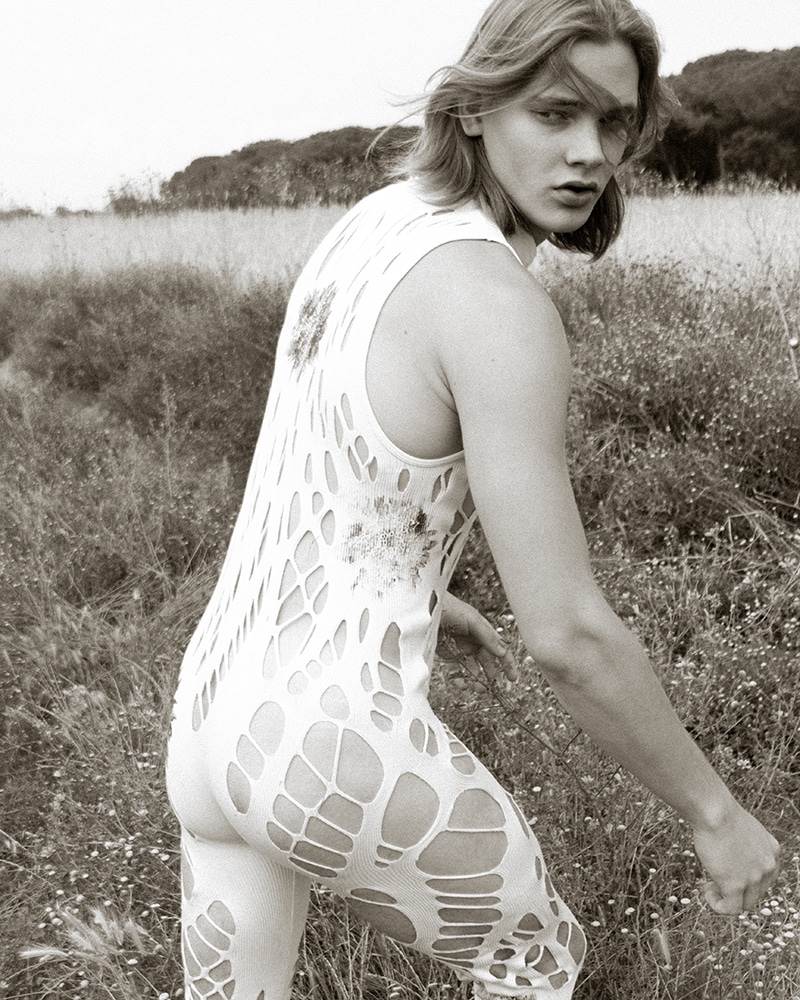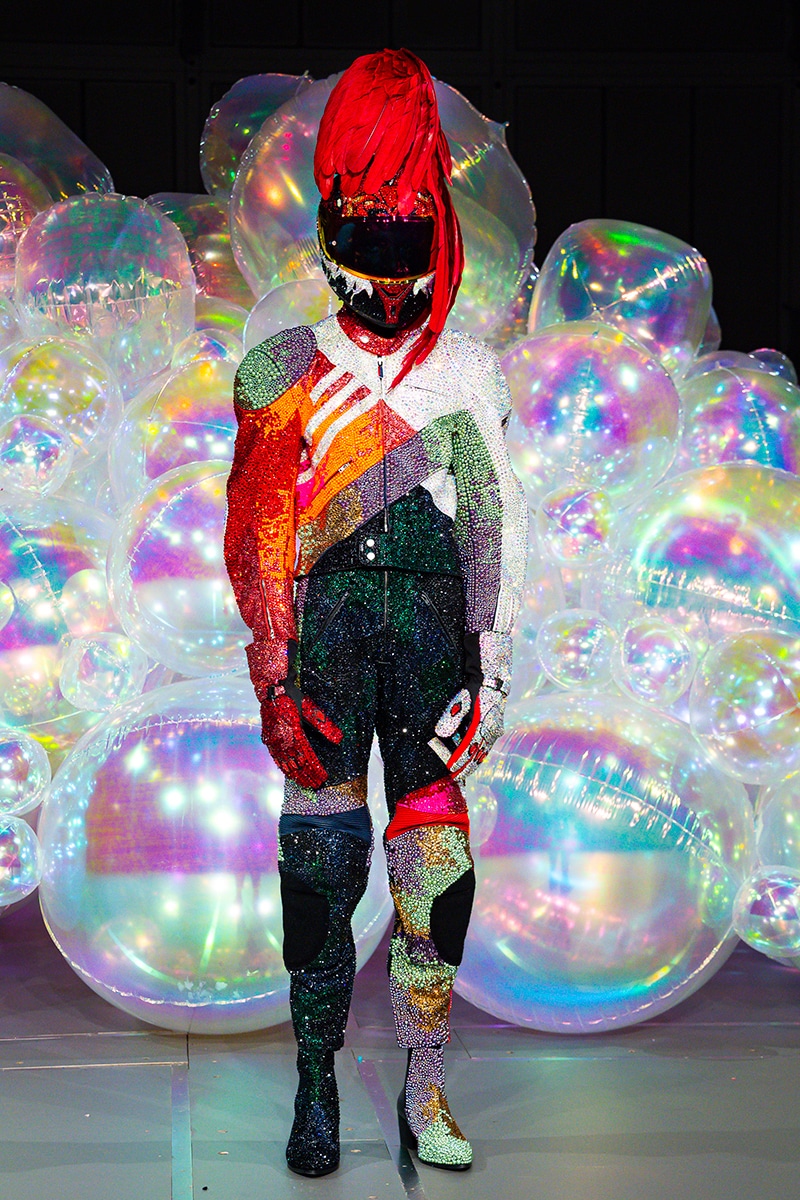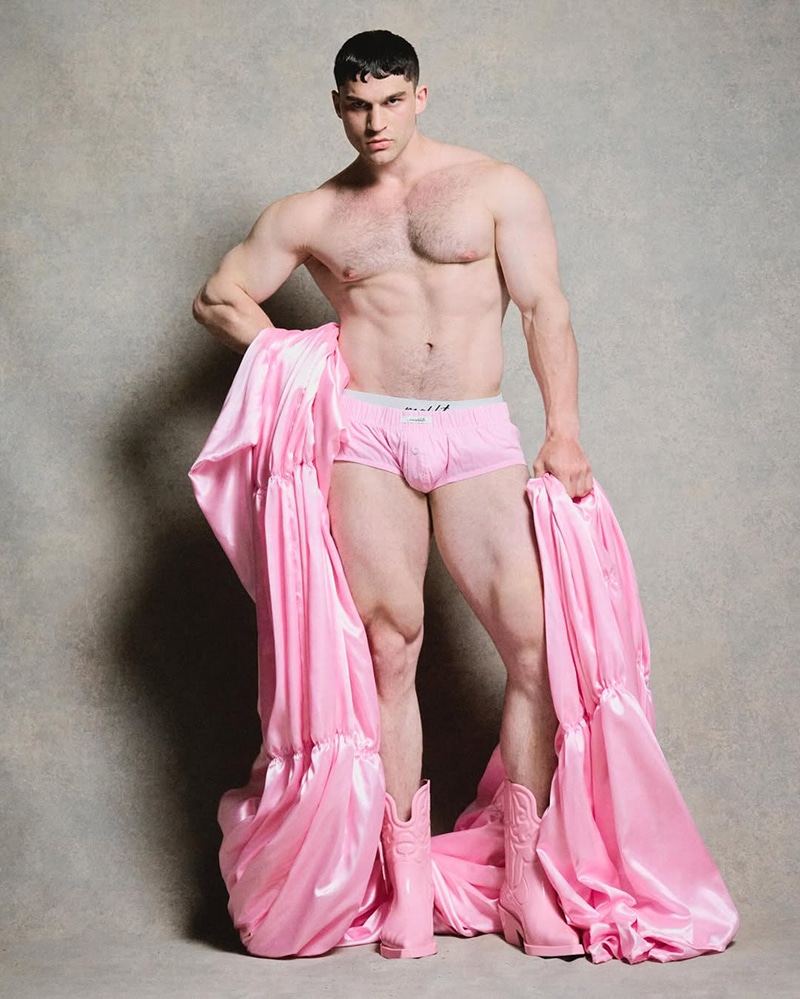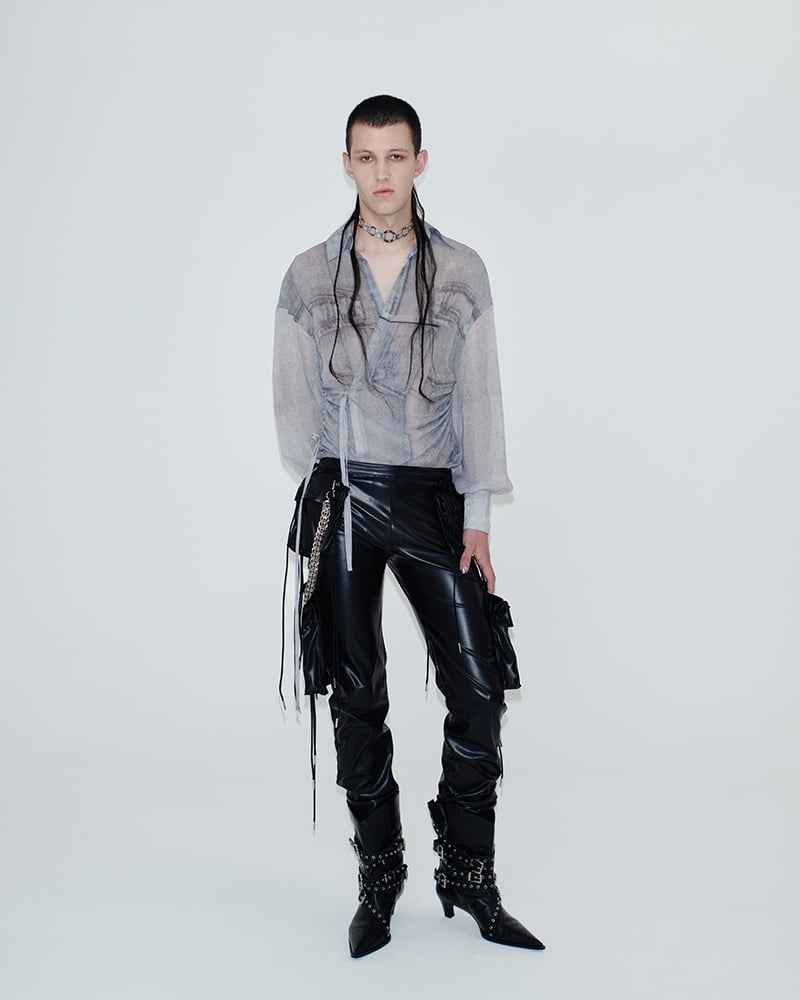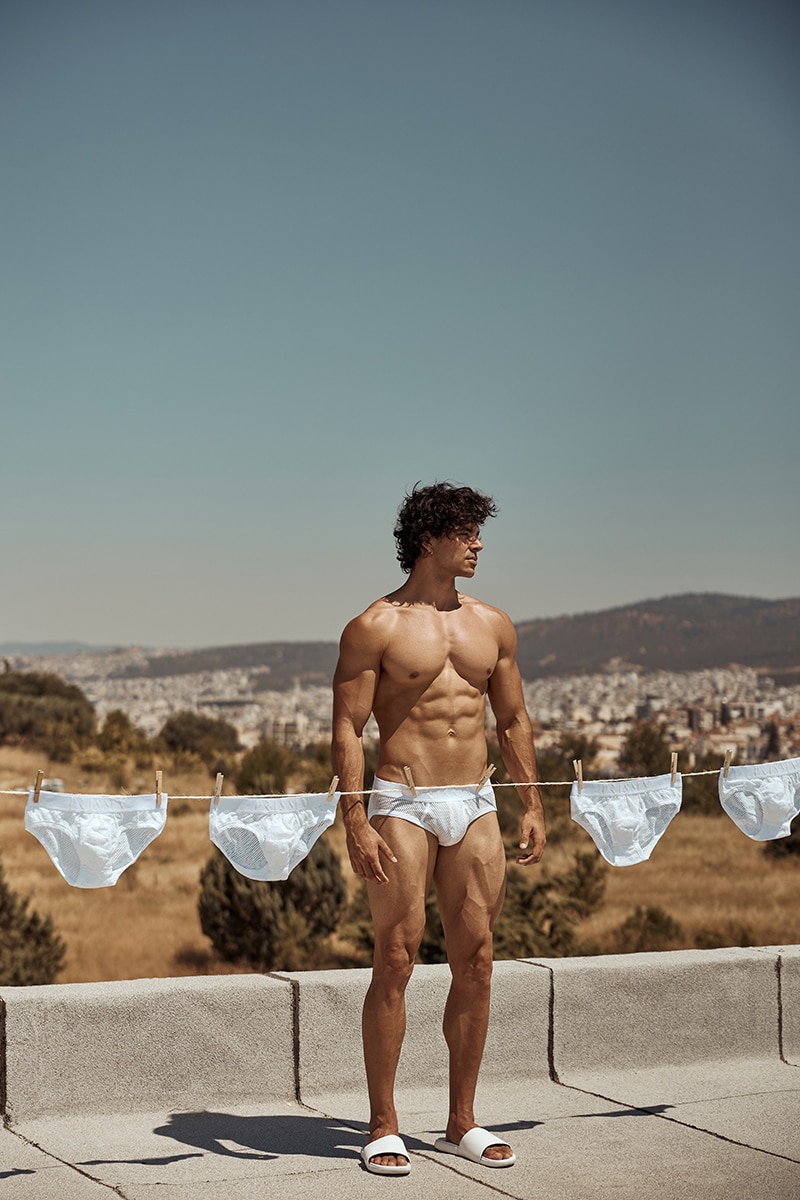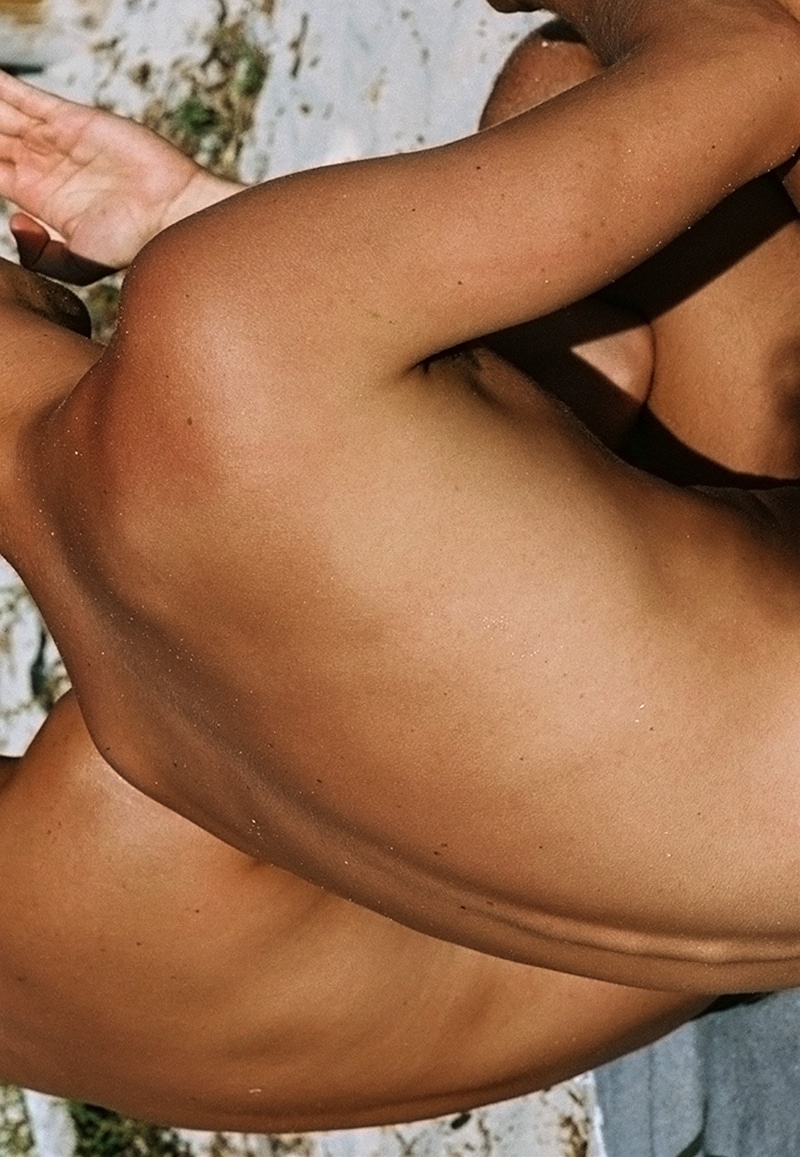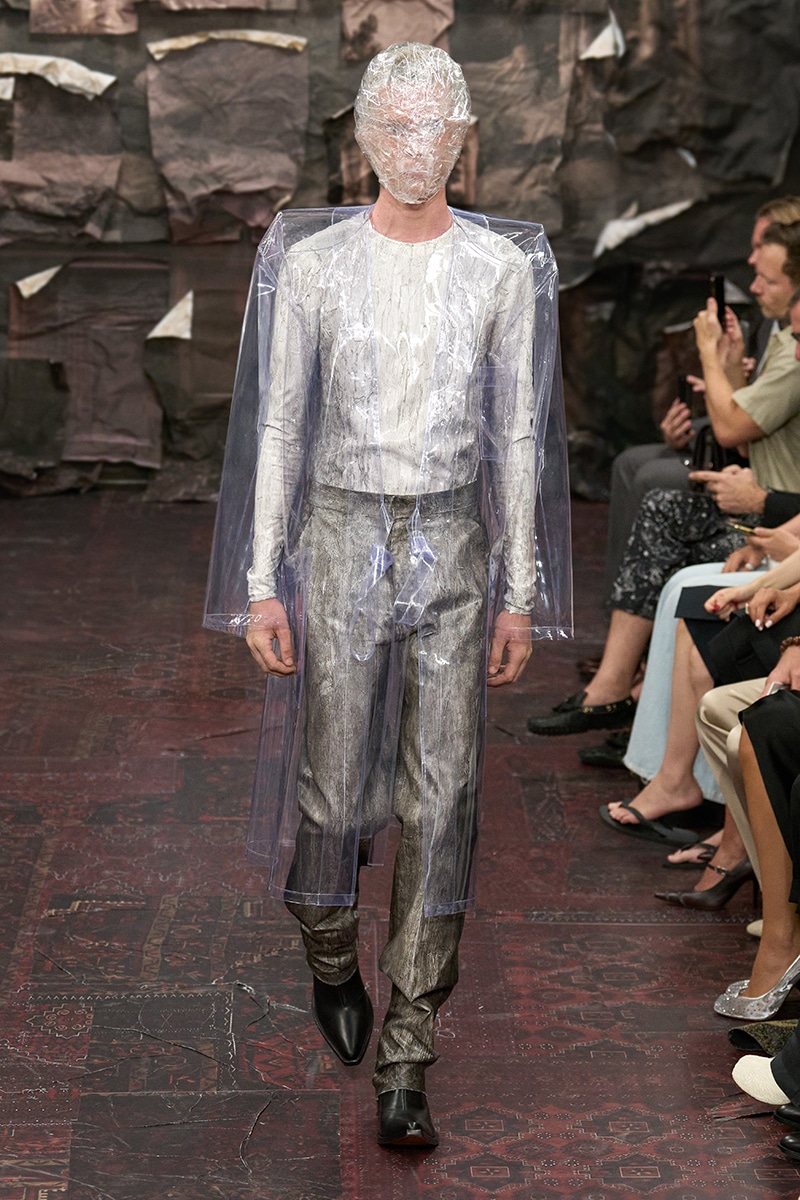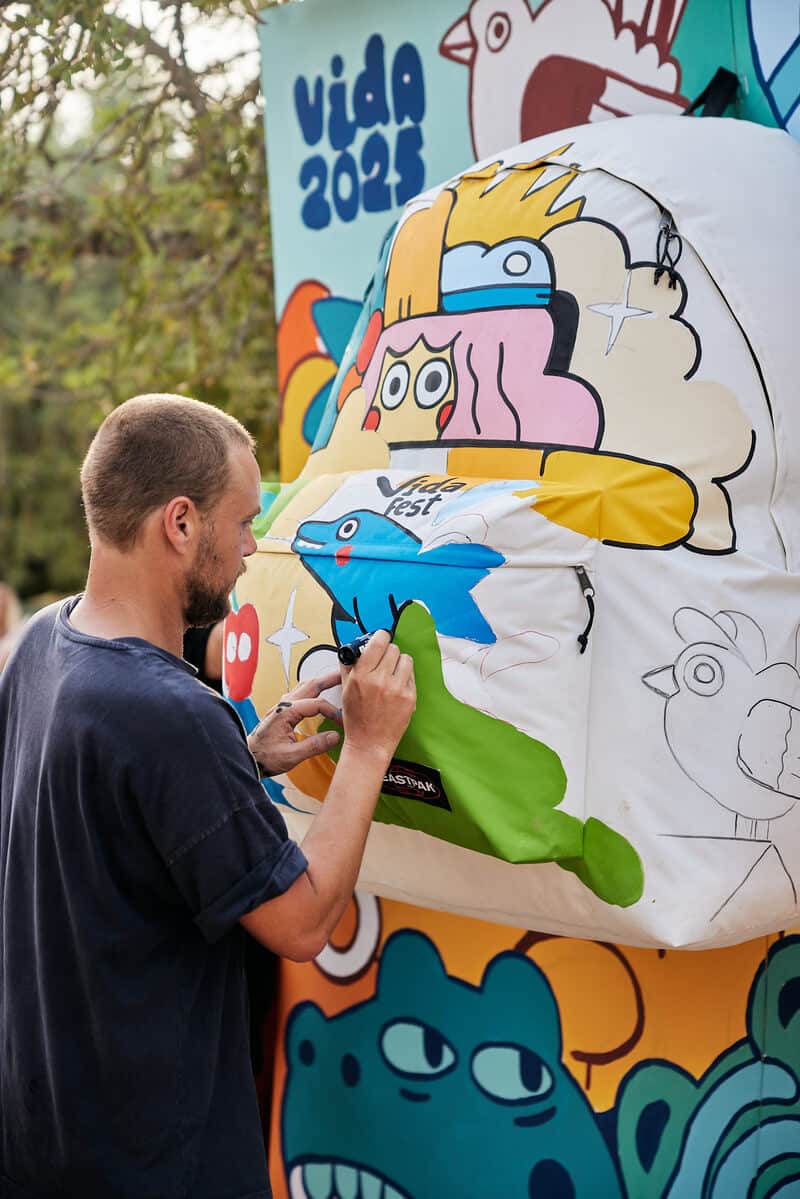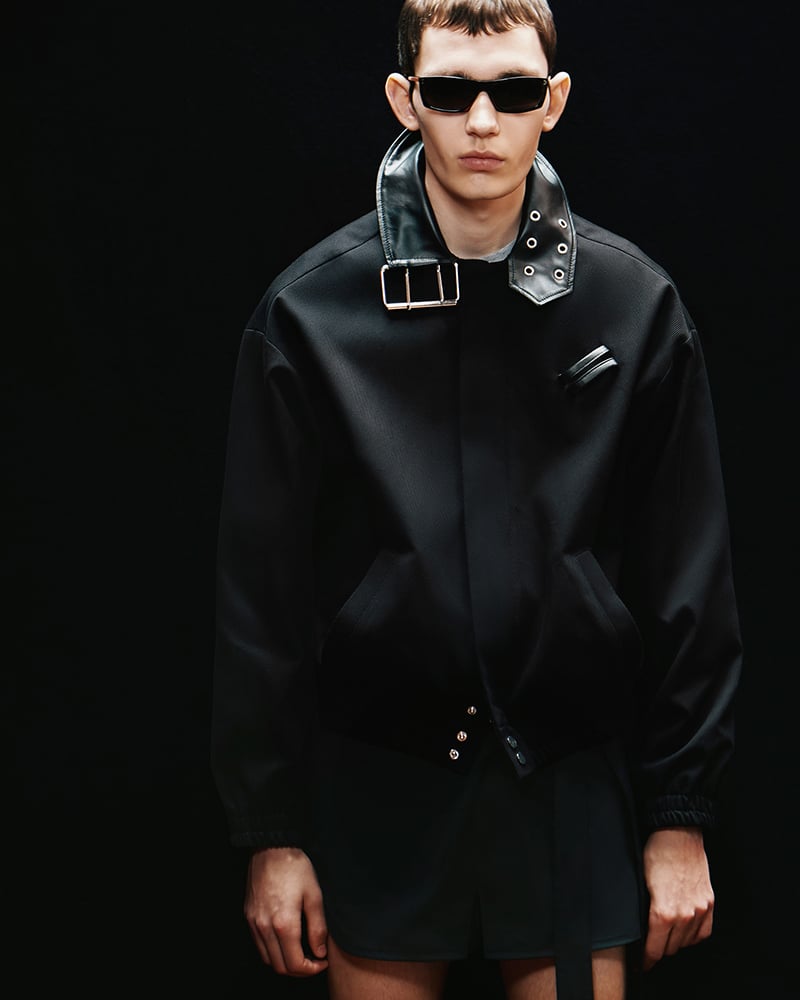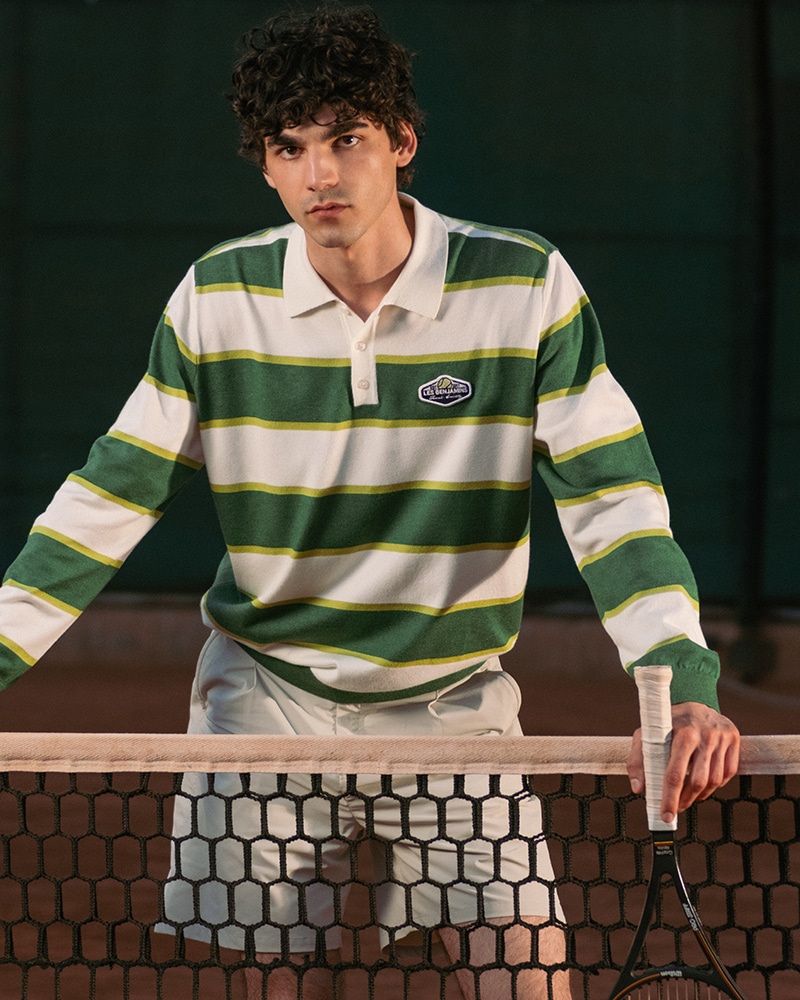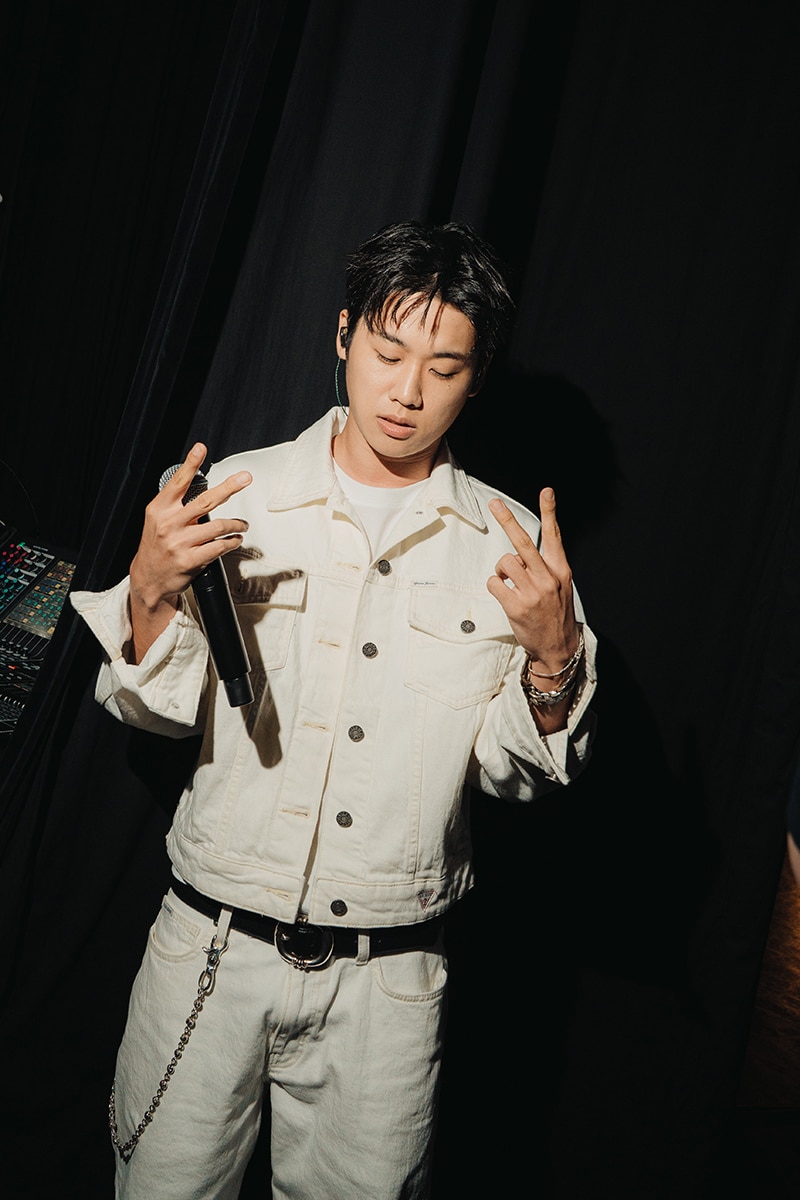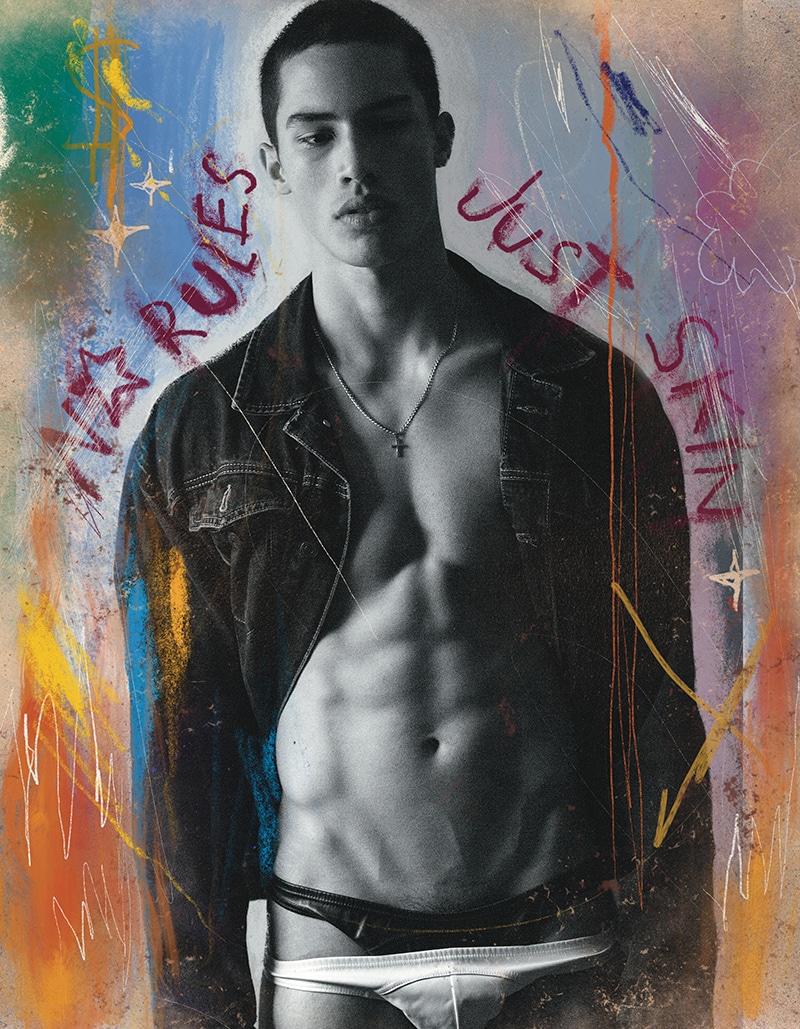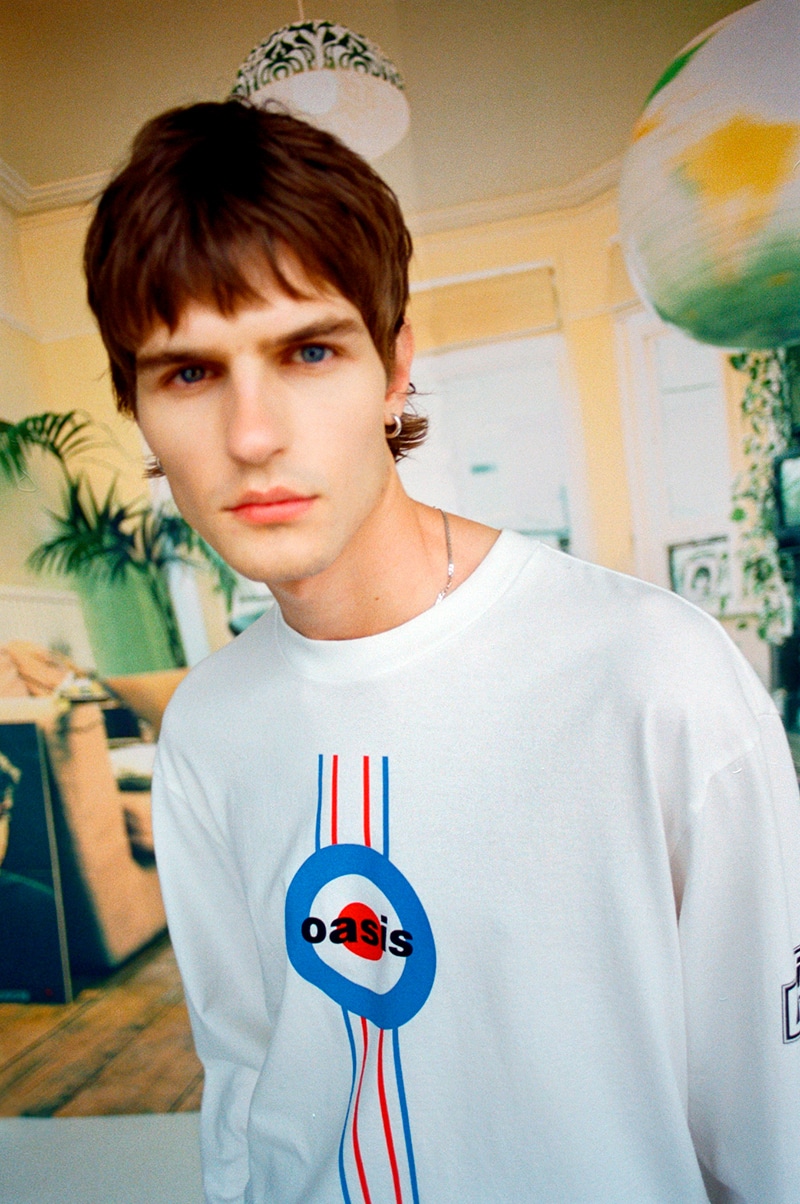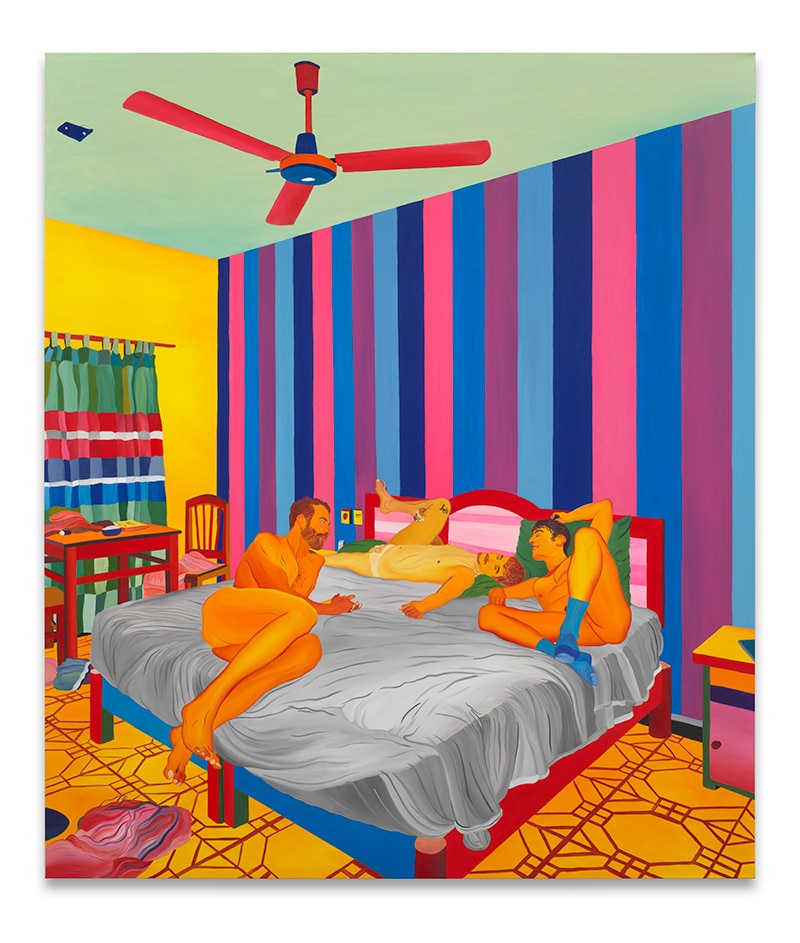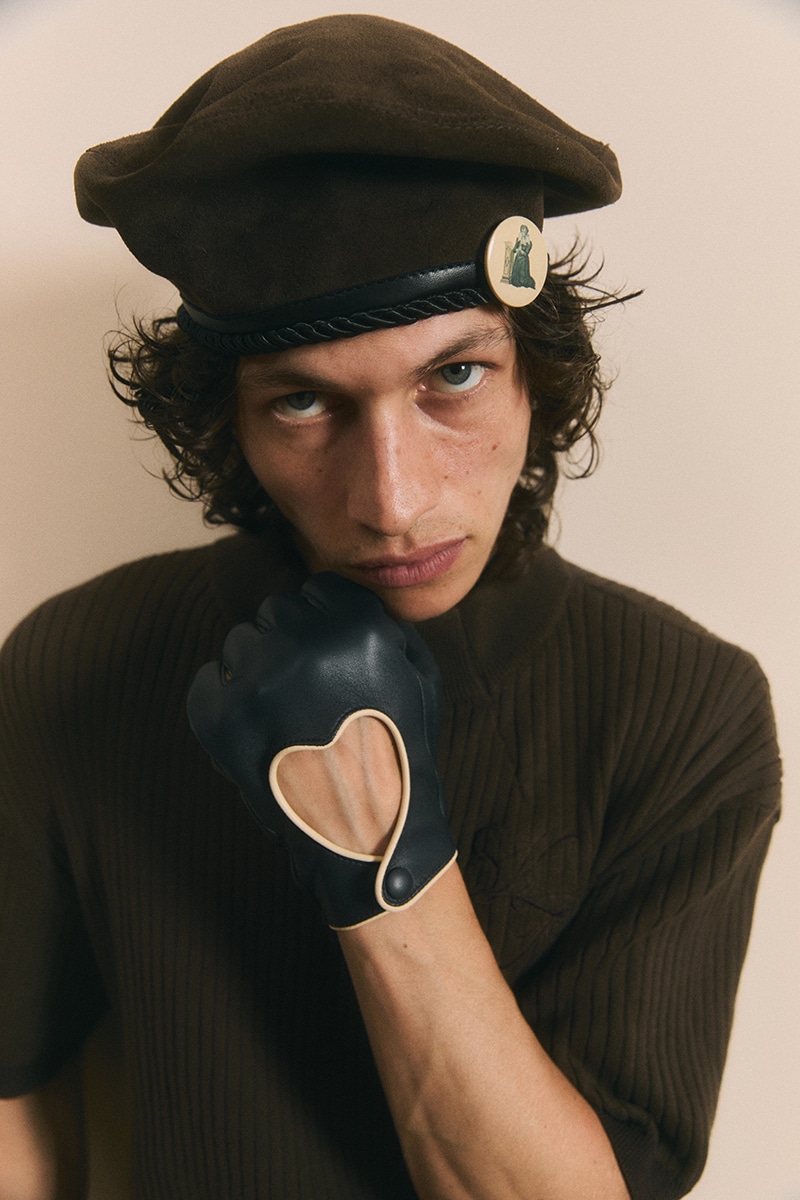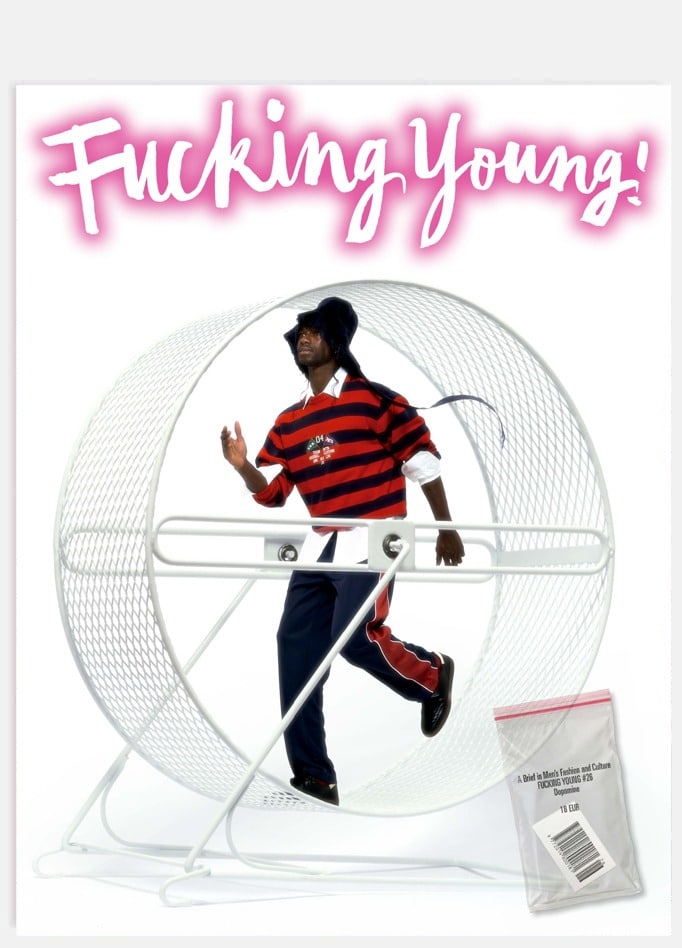Antonio Vattev’s FW20 Collection Embodies A Provocative Narrative Suffused With Poetry
by Chidozie Obasi































Schoolboy then, innovator now: Bulgarian-rooted Antonio Vattev is a know-how kid to keep on your #NewGen radar. Charting his experience in luxury Maisons such as Lanvin and Saint Laurent, the lead-up to his eponymous namesake label (upon his graduation from Saint Martins, London) was tense, no doubt, but the aftermath turned out pretty much mindblowing.
Now onto the clothes – Judy Blame’s work could be subtly spotlighted in Vattev’s key iterations, often epitomized by the usage of vintage-sourced garments and fabrics, alongside jewelry staples accessorized with found scraps. Construction, cinched-defined structure, and deconstruction brim propelling into a see-to-believe finishing dash that could feasibly revive a 1950s lapel or a maxi-pocketed shirt from the 1980s, bigging-up the sustainability conundrum. Utility trousers, razor-sharp tailoring, and boldness add-in range, too. Quite often, sleeve-power swings in: Intricacy and statement embroidery billow shapes and augment functionality. All in the name of innovation, nodding to his Bulgarian heritage.
Silhouettes allude to perceptions of Mick Jagger’s style, whilst patterns imbue the poetry of Georgia O’Keeffe’s iconic paintings.
In times where capitalizing on upcycling and ethical-sourcing never seems enough, it becomes fairly ubiquitous to make assumptions and scatter judgment (particularly when being sustainable in making warrants being sustainable in package-manufacturing, production, and what not) to a young wave of designers. Truth is, if not the youth – through modern technological advancement – who else can be more avant-garde and ethical other than them? It takes more than a savvy spirit to be part of this industry; it’s about the strategy one utilizes, patronized by a distinct sense of identity. Enough of the dreary stuff: Vattev challenges a provocative dynamic in his pieces, cherishing for the ever-coveted ‘buzz-phrase’ a.k.a ‘sustainability’ and plunging into codes that own a profound purposefulness. Indeed, purposefulness. His competence in making led to creating biproducts, approaching fashion from a dual-lens: Why only wearing a cotton tee once, if you can wear it where it twice and paired inversely? Precisely as I specified: it’s enticing and also mindblowing. A narrative permeated with meaningful garments that cross-reference rigor and romance.
Let’s not neglect the hyper-mindful brain behind it all, too: subversive and proactive, hybrids harness commercialism and utopia, brimming a duality that hovers between the ethereal and the worldly ever astonishingly.
Photos: Pablo Di Prima
Styling: Ib Kamara
Vitelli Fall/Winter 2020 Lookbook
Fashion Film Premiere: ALMA
actual
Antonio Vattev’s FW20 Collection Embodies A Provocative Narrative Suffused With Poetry
previous
Vitelli Fall/Winter 2020 Lookbook
next
Fashion Film Premiere: ALMA
We had the opportunity to chat with Martin about the great skincare reset and what we can learn from Danish clean beauty.
HAIKURE’s SS26 collection, Come As You Are, is for people who want to feel good without the effort, who wear clothes that fit their lives, not the other way around.
Daniel Solano captured by the lens of Arthur Coelho and styled by Dana Fracalossi, in exclusive for Fucking Young! Online.
For his second couture show closing Haute Couture Week, Kevin Germanier chose to have fun.
Glass Cypress’s Spring/Summer 2026 collection, The Ones Who Flee, is a meditation on movement, not just physical escape, but the deeper act of resisting what binds us.
For Oakley, it’s been five decades of innovation, turning science into design, and refusing to blend in.
Alan Crocetti’s latest collection, Hard Core Fantasy, is a deeply personal exploration of identity, desire, and self-protection through jewelry.
Francisco Terra’s 15th-anniversary collection for Maldito is a midnight ride through memory, a fever dream of teenage longing stitched into lace and rhinestones.
LARUICCI’s Spring/Summer 2026 collection bottles the chaotic charm of early 2000s Hollywood.
PRISMA’s latest collection isn’t about hiding but about what happens when you stop trying to.
HEREU is marking its 10th anniversary with Memory. A Play of Twos, a photobook that captures a decade of creative exchange.
In a time of movement and uncertainty, Estelita Mendonça’s Spring/Summer 2026 collection questions what clothing means when stability feels like a luxury.
We talked with Ziggy Chen to learn more about the thinking behind PRITRIKE, his process and his relationship with materials.
Take a look at C.R.E.O.L.E’s Spring/Summer 2026 backstage, captured by the lens of Spencer Stovell during Paris Fashion Week, in exclusive for Fucking Young!
Glenn Martens’ Maison Margiela Artisanal collection doesn’t just borrow from history, but it fractures it, reassembles it, and wears it like a second skin.
This weekend, Eastpak reminded us that backpacks aren’t just carriers of belongings – they’re carriers of stories, creativity, and identity
For Spring/Summer 2026, A. A. Spectrum finds inspiration in quiet moments, the natural ease of creativity, and the unforced beauty of renewal.
For Spring/Summer 2026, AV Vattev’s Bohème collection takes its cues from two iconic worlds: the effortless cool of French New Wave cinema and the raw energy of British music subcultures.
Concrete Husband talks about turning psychological collapse into industrial soundscapes, confronting darkness on Berghain’s dancefloor, and why dark techno is, above all, sexy.
Maciej Poplonyk photographed by Arthur Iskandarov and styled by Egor Telenchenko, in exclusive for Fucking Young! Online.
Titled “YOU DO NOT BELONG HERE,” the visuals strip away ambiguity, trading fantasy for sharp, cinematic storytelling.
We met Yoon Ambush – Co-founder and Creative Director of AMBUSH – in Paris during Men’s Fashion Week.
Les Benjamins has turned its attention to the tennis court with a new collection that mixes sport and style.
GUESS JEANS has officially arrived in Tokyo, opening its first Asian flagship store in the heart of the city’s fashion district.
WHOLE is a pilgrimage for the global queer community, a temporary world where joy, radical acceptance, and self-expression reign supreme.
Alexis Otero captured by the lens of Lucas Lei, in exclusive for Fucking Young! Online.
Levi’s® is celebrating Oasis’ long-awaited reunion with a new collection that combines the band’s iconic style with classic denim.
There’s no bitterness in the heartbreak here, just the sense that longing isn’t defeat, but proof you’re alive.
We had the chance to catch up with Ohio-born, Brooklyn-based designer Kody Phillips in his Paris Fashion Week showroom where he unveiled his Spring/Summer 2026 collection.
Dean and Dan doubled down on their love of fashion’s most dramatic moments, remixing 80s power dressing, 90s grunge, and 2000s excess into something entirely their own.


































